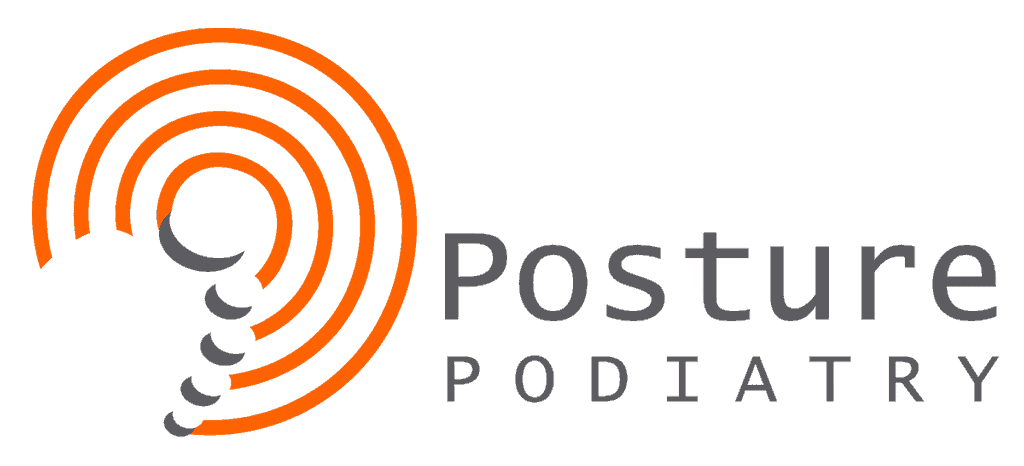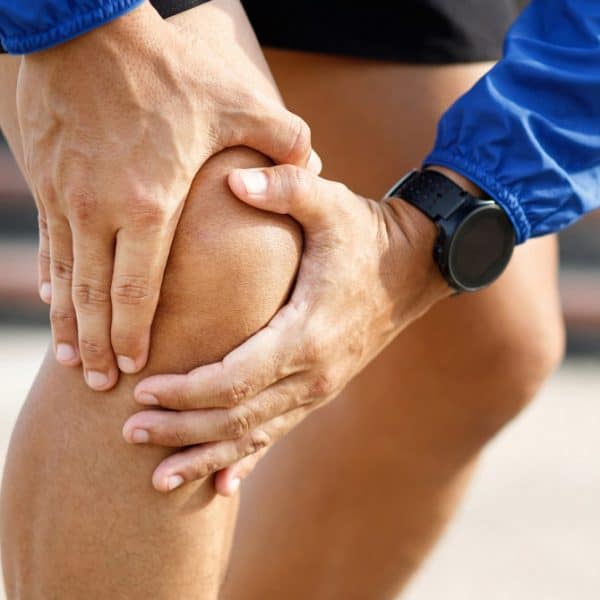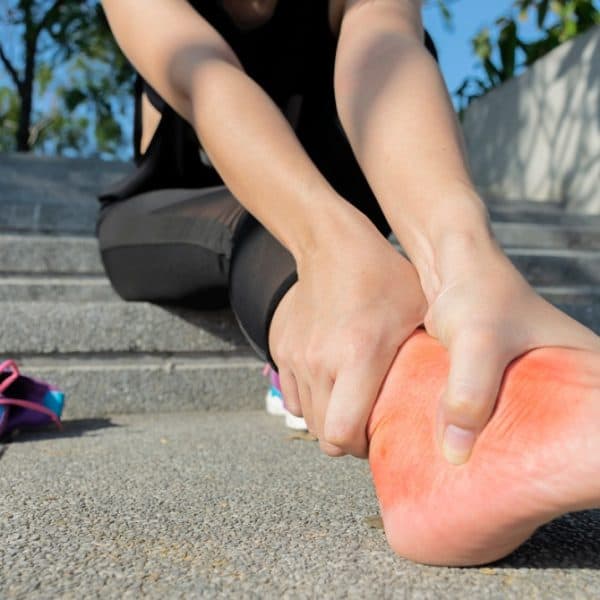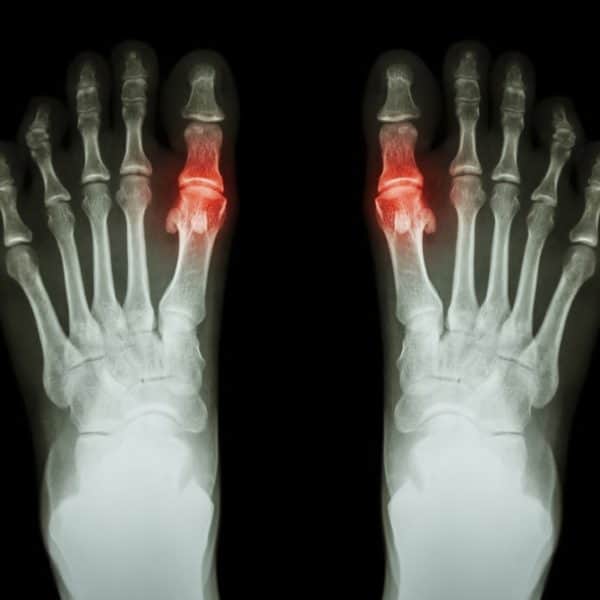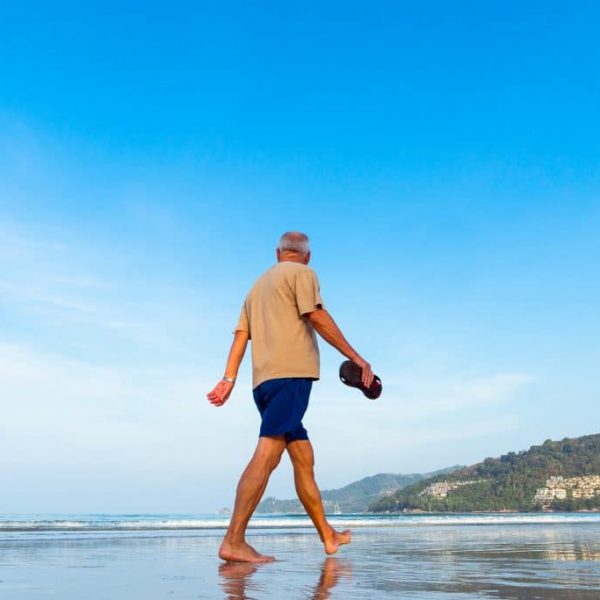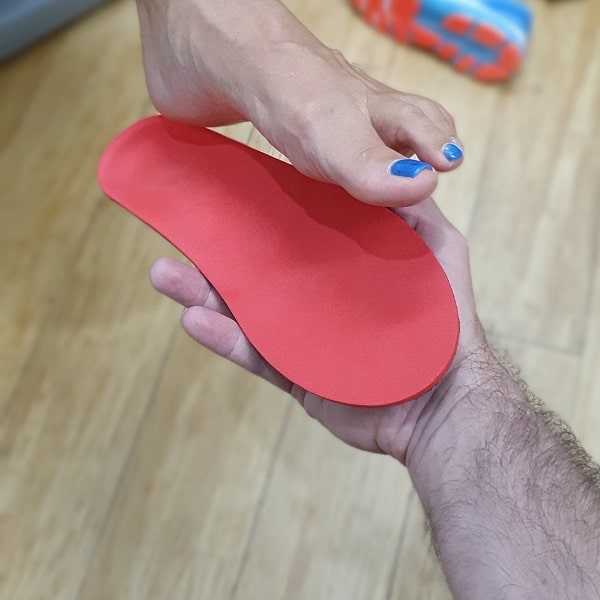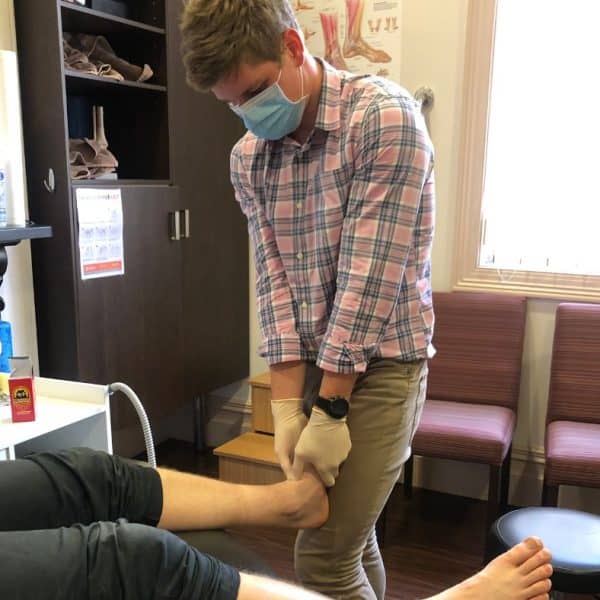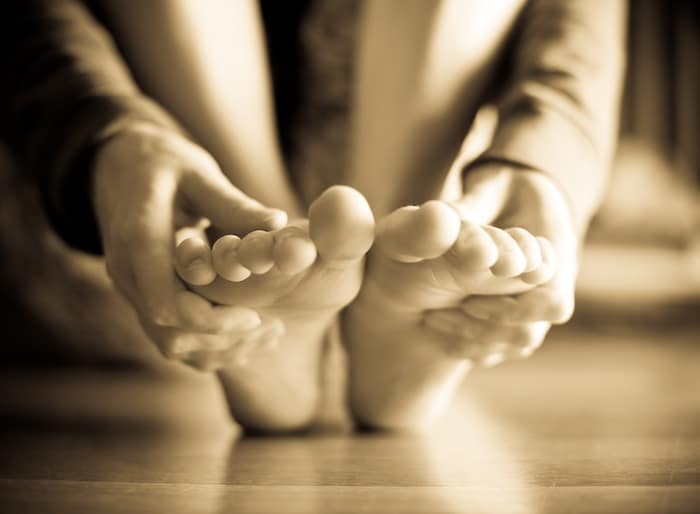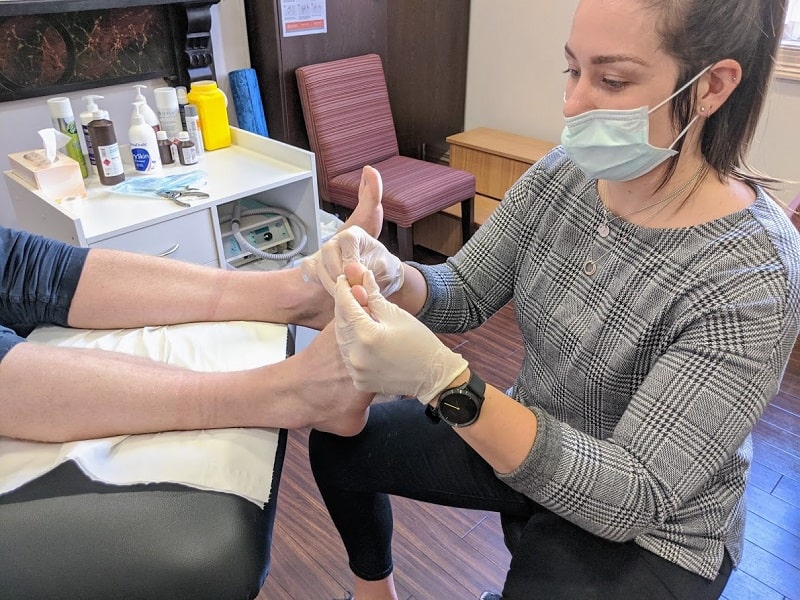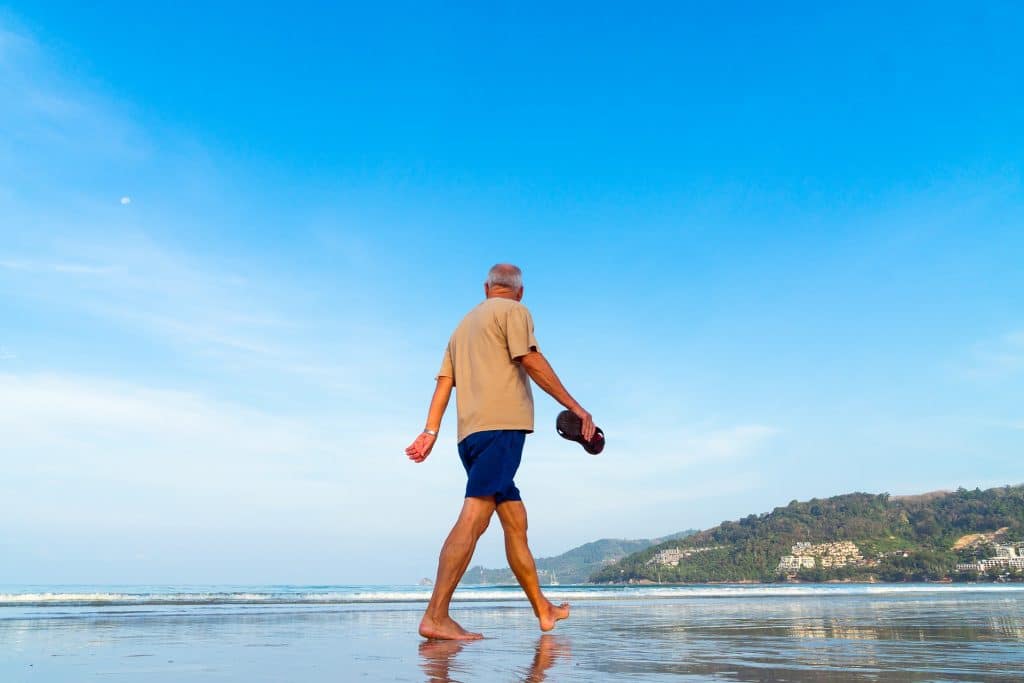Arthritis and the Feet
Arthritis exists in various different forms and there are multiple types of arthropathies that affect the foot, ankle and leg. There are probably four main types of arthritis which we see regularly affecting the feet, ankle and knees. These four types include:
- Osteoarthritis;
- Rheumatoid Arthritis;
- Gout; and
- Psoriatic Arthritis.
Post traumatic arthritis may also been seen following accidental or sporting injuries.
These arthropathies range in severity through the foot, ankle and knee. Not everyone has the same experience with arthritis, so it is important that you become in tune with your body. At Posture Podiatry, we can help you understand your arthritis and put you on the right track to manage your pain and reduce the symptoms. Ultimately, our goal is to get you living your life without having your arthritis prevent or limit you from doing what you want. Everyone’s journey is different, but we can help guide you along the way.
To schedule an appointment with an experienced Adelaide Podiatrist,
contact us or BOOK ONLINE by clicking here
What are the differences between the types of Arthritis?
Osteoarthritis
Osteoarthritis is the most common type of arthritis and can affect any joints in the body. However, we mainly see it present in the big toe joint, the midfoot, the ankle joint and the knee joint. It is generally one side only and in one particular joint. It is estimated that one in 6 people aged over 50 suffer from osteoarthritis in their feet.
Osteoarthritis is a degenerative joint disorder of the cartilage, which enables the joints to move smoothly without friction. This degeneration leads to joints not moving as efficiently or effectively, which causes pain through certain movements. Naturally, as you age, the cartilage deteriorates, but osteoarthritis is an advancement of the deterioration for your age. Protecting the joint to prevent further deterioration is our main goal when treating Osteoarthritis and can be achieved through various different ways.
To schedule an appointment with an experienced Adelaide Podiatrist,
contact us or BOOK ONLINE by clicking here
Gout
is a type of arthritis that causes uric acid crystals to deposit in joints leading to severe pain and inflammation. It is characterised by attacks with acute flare ups and periods of remission. The big toe joint is the most common joint affected by gout, however it can also present in other joints, such as the ankle and knee. 50% of first attacks are in the big toe joint. There are a range of factors that can contribute to gout but the most common are: being male, too much alcohol consumption, Type II diabetes, hypertension, diet high in purines and being overweight.
Christmas time can be quite dangerous for gout as a lot of the traditional Christmas foods contain purines that is normally accompanied with alcohol. With gout, our main goal is to keep you stable and to prevent attacks from occurring. This means being in tune with your diet, your overall health and trying to reduce as many risk factors as possible.
Rheumatoid Arthritis
Rheumatoid Arthritis is a type of inflammatory arthritis that affects the same joints across both sides of the body. It is an autoimmune disease which causes the body’s immune system to attack the joints synovium, or protective tissue, causing the synovium to thicken which leads to reduced movement through the joint along with pain and inflammation. Rheumatoid arthritis is a progressive disease and unless action is taken early, it can lead to deformation of joints which can have lasting effects.
The need to support the Rheumatoid Arthritic foot in early stages is necessary to prevent the foot from deforming in later stages. Once the structure of the foot has changed, only surgery can reverse the process. Hence, the main goal is to prevent surgery down the track.
Rheumatoid arthritis can also lead to enthesopathies, which is the inflammation of the attachment site of a tendon, ligament or soft tissue to bone. Achilles tendonitis and plantar fasciitis are examples of enthesopathies. Sometimes, long lasting plantar fasciitis or achilles tendonitis can be due to Rheumatoid arthritis before diagnosis.
Psoriatic Arthritis
Psoriatic arthritis is another type of inflammatory arthritis. As the name suggests, it is related to the skin condition, Psoriasis. Psoriasis is an autoimmune disease causing the skin to form at an extremely fast rate leading to scales and itchy, dry patches of skin.
Approximately 15% of people with psoriasis will develop psoriatic arthritis, but for some the arthritis may come before the skin condition. Psoriatic arthritis causes inflammation in one or multiple joints in the body leading to pain, stiff and swollen joints. It varies in severity between sufferers. Like Rheumatoid arthritis, it also causes enthesopathies. For psoriatic arthritis, offloading these painful joints is the main goal to get you moving without pain.
To schedule an appointment with an experienced Adelaide Podiatrist,
contact us or BOOK ONLINE by clicking here
How can we help Arthritis as Podiatrists?
For all types of arthritis, we want to keep you moving. For healthy people, maintaining an exercise program can be hard, so it can be even harder for people who suffer from arthritis. However, the benefits of exercise can not be dismissed.
Research has consistently shown that regular moderate exercise helps to maintain healthy joint function and reduces the severity of stiffness and pain. It doesn’t need to be vigorous exercise, but building up to 2 hours and 30 minutes of moderate aerobic exercise has been proven to reduce pain in people with arthritis. If this is something that you may struggle with, our Podiatrists can help to create a program that can help keep you active.
Secondly, the right footwear is a huge factor in arthritis. Having the wrong shoes can lead to more pain with your arthritis. Shoes need to accommodate the stiffness and swelling of joints along with bunions and hammer toes that are often seen accompanying arthritis. Investing in a good pair of shoes that can offload and reduce the stresses and forces through these joints, can make a huge difference.
To schedule an appointment with an experienced Adelaide Podiatrist,
contact us or BOOK ONLINE by clicking here
Our Podiatrists can recommend specific types of shoes, such as rocker sole shoes and stability shoes as well as pointing you in the right direction where to find them. Rocker soled shoes may be indicated if your arthritis affects the forefoot. Rocker sole shoes have increased curvature through the front of the shoe, which enables momentum, rather than force from your joints, to propel you into the next step.
Orthotics are fantastic tools to help soothe arthritic pain, as well as keeping your feet stable and supported. Being customised, we can adjust the level of control for both feet to match your needs. We can also accommodate your arthritis by adding soft padding at the forefoot or increasing the stiffness to prevent motion at certain joints. An orthotic that is prescribed well can work wonders at decreasing pain and increasing mobility. Paired with a supportive shoe, an orthotic can help to get you back on track.
Foot mobilisation has been found to be very useful especially with osteoarthritis. Foot mobilisation and massage can be thought of as very controlled movements applied by trained professionals. Movement is medicine when it comes to any form of arthritis so specific foot mobilisation and massage techniques can be very helpful in helping to restore more normal movement.
To schedule an appointment with an experienced Adelaide Podiatrist,
contact us or BOOK ONLINE by clicking here
Supplements, diet and anti-inflammatory medications may need to be considered in some situations. This is especially true with chronic Gout and Rheumatoid Arthritis as dietary intake can both improve and exacerbate arthritic pain.
Non-steroidal anti-inflammatories can be a polarising topic. Many people will not take them at all and others swear by them. As a lot of arthritis pain causes inflammation at the joints, NSAIDs can be a useful way to reduce the inflammation and reduce the pain of your arthritis. These aren’t something we would recommend you necessarily take daily, but may be a consideration on days where you’re feeling quite debilitated. In this situation, they can be quite helpful to keep you going. Never take more than the recommended amount of NSAIDs. They can be taken both orally and in the form of a gel. We recommend you talk to your general practitioner before taking NSAIDs for your arthritis.
Foot and ankle bracing/splints may be considered in some situations.
Podiatrists will often work closely with your family doctor and may request specific blood tests be carried out when appropriate to check arthritic markers especially where medication has been prescribed as part of arthritic management.
Cortisone injections may be appropriate in some cases and surgery is only recommended when pain is unable to be managed or when shoes are unable to be fitted.
To schedule an appointment with an experienced Adelaide Podiatrist,
contact us or BOOK ONLINE by clicking here
